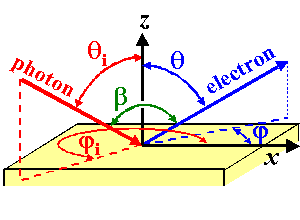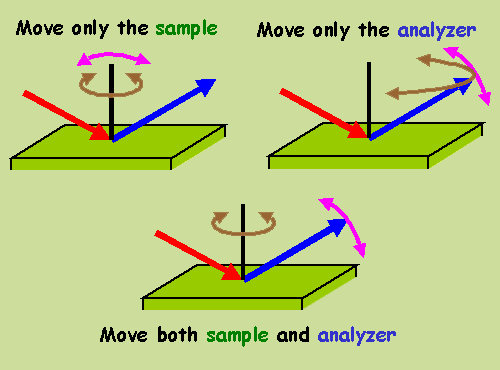
| Mobility of beam, analyzer, and sample |  |

Choosing "Only the sample moves",
the angle between
the incoming beam and the analyzer is kept constant and equal
to the input parameter β (then the incident
angle parameters are disregarded). The polar angles of emission
(θ,φ) are given
with respect to the surface normal. The sample moves in such a way
that the surface normal is always contained in the plane determined
by the incidence and emission directions, and the polar angles of
emission are θ=β and φ=0 for normal incidence.
The azimuthal angle is measured with respect to the x axis.
Choosing "Only the analyzer moves",
the incoming beam is fixed
with respect to the sample, so that by varying the angles of emission θ and φ, only
the analyzer moves. These are the polar angles of the photoelectron
with respect to the surface normal.
(The incidence direction is kept constant with respect to the sample,
so that the parameter β is disregarded in
this mode.)
Choosing "Both the sample and the analyzer move",
the sample moves with the azimuthal angle of emission φ, while the analyzer moves with
the polar angle of emission θ.
The direction of incidence with respect to the surface normal
is (θi,φ+π)
when the direction of emission
is (θ,φ).
(The azimuthal angle of incidence φi and the angle β are disregarded
in this mode.)
The following schematic representation can help to visualize this.
Azimuthal/polar rotations are represented by brown/pink double arrows.
The sample and the analyzer move when these arrows are sitting on the
analyzer (blue arrow) and near the surface normal (black line),
respectively.
